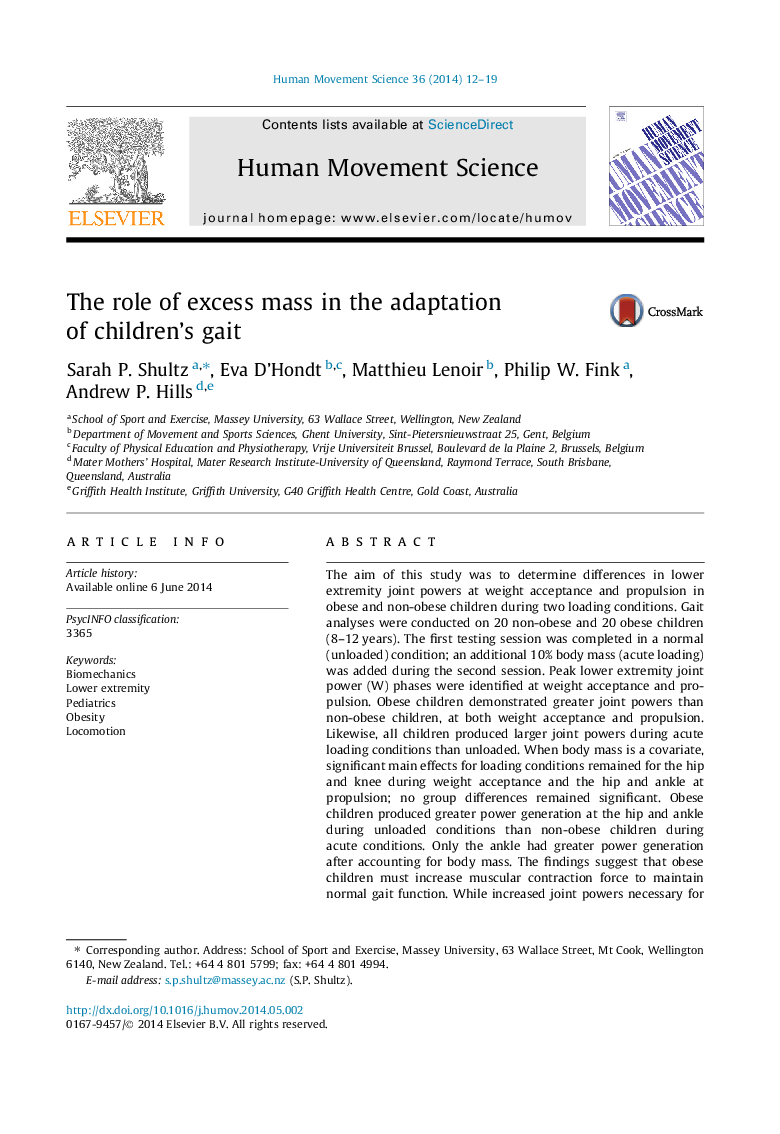| کد مقاله | کد نشریه | سال انتشار | مقاله انگلیسی | نسخه تمام متن |
|---|---|---|---|---|
| 928319 | 1474229 | 2014 | 8 صفحه PDF | دانلود رایگان |
• Novel findings of an acute loading condition to explain the role of excess mass in children’s gait.
• Obese children require larger muscle contractions to maintain similar gait patterns.
• Incidental muscle training may occur in obese children as a result of carrying excess mass.
The aim of this study was to determine differences in lower extremity joint powers at weight acceptance and propulsion in obese and non-obese children during two loading conditions. Gait analyses were conducted on 20 non-obese and 20 obese children (8–12 years). The first testing session was completed in a normal (unloaded) condition; an additional 10% body mass (acute loading) was added during the second session. Peak lower extremity joint power (W) phases were identified at weight acceptance and propulsion. Obese children demonstrated greater joint powers than non-obese children, at both weight acceptance and propulsion. Likewise, all children produced larger joint powers during acute loading conditions than unloaded. When body mass is a covariate, significant main effects for loading conditions remained for the hip and knee during weight acceptance and the hip and ankle at propulsion; no group differences remained significant. Obese children produced greater power generation at the hip and ankle during unloaded conditions than non-obese children during acute conditions. Only the ankle had greater power generation after accounting for body mass. The findings suggest that obese children must increase muscular contraction force to maintain normal gait function. While increased joint powers necessary for normal gait could result in incidental muscle strengthening of obese children, this persistent increase in muscular force demand could result in musculoskeletal injury.
Journal: Human Movement Science - Volume 36, August 2014, Pages 12–19
